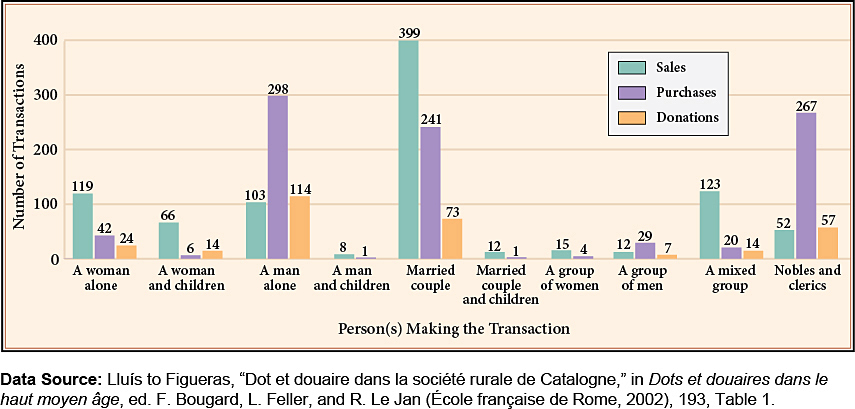Taking Measure: Sellers, Buyers, and Donors, 800–1000
How did women get their wealth, and what did they do with it? Two counties in northeastern Spain, Osona and Manresa, are particularly rich in documentation for the period 880–1000. We have 2,121 charters (legal documents) attesting to sales, purchases, and donations of land from this period. As the graph shows, few women purchased property, which suggests that they gained their lands mainly through inheritance. As for what they did with it: by themselves they were more likely to sell property than men alone, and as part of a married couple, they were often involved in sales. They were less likely than men to make donations, many of which went to churches or monasteries.

Question to Consider
How do you account for the differences between the ways in which women and men inherited and used their property?